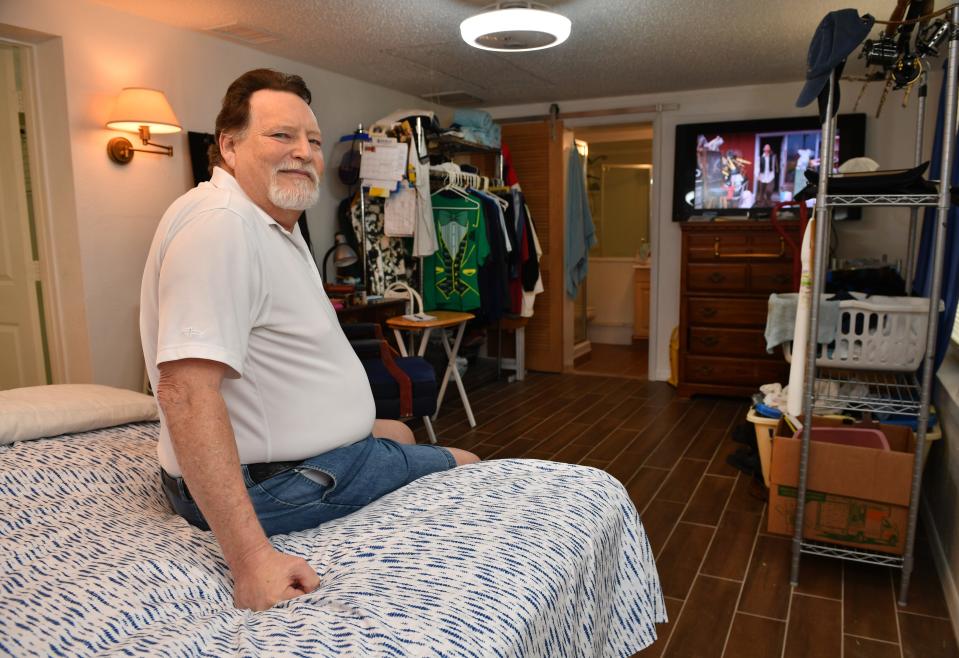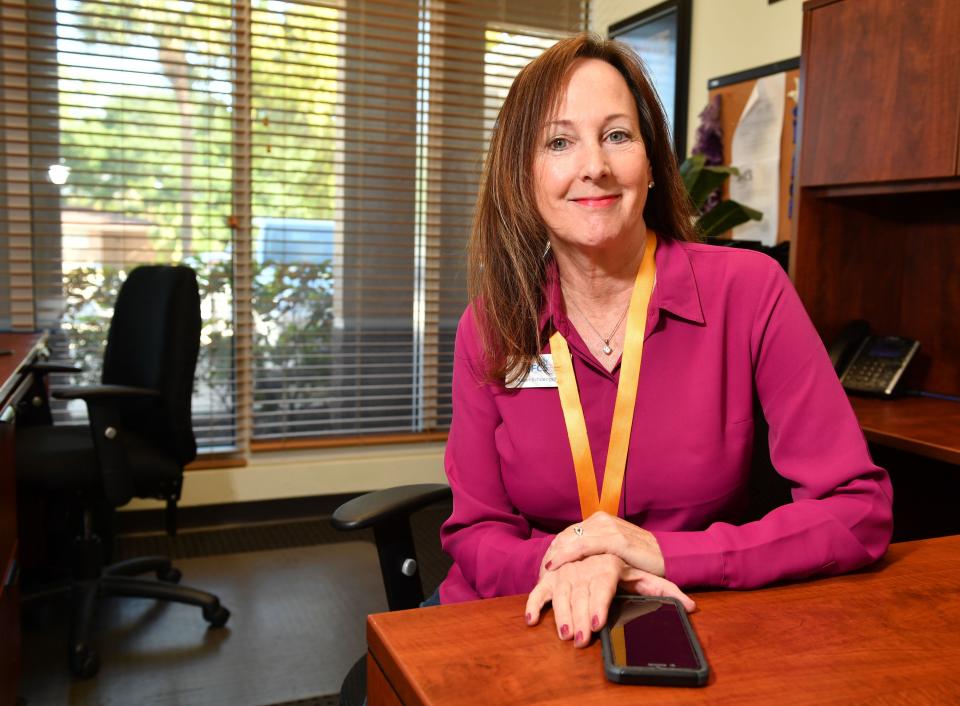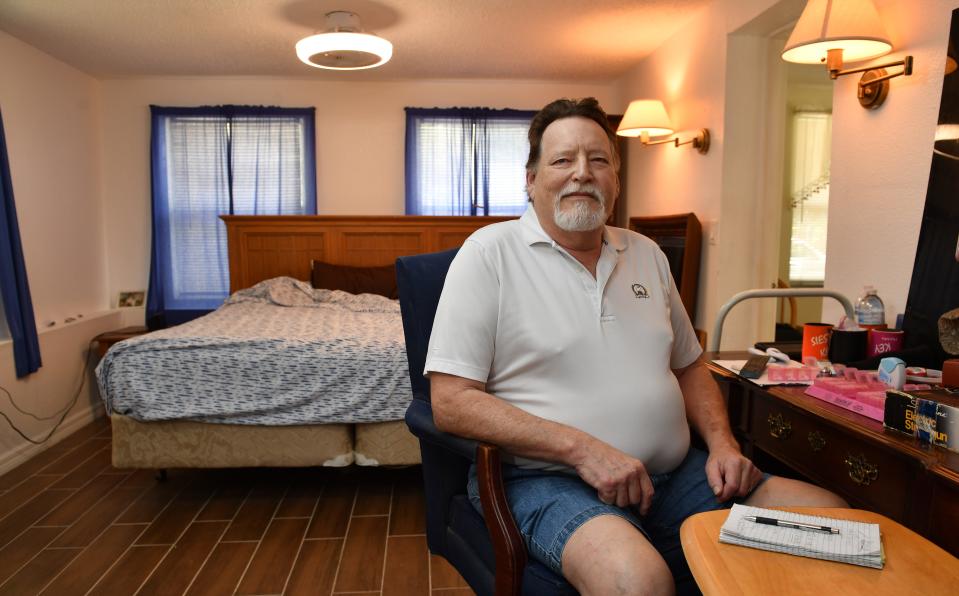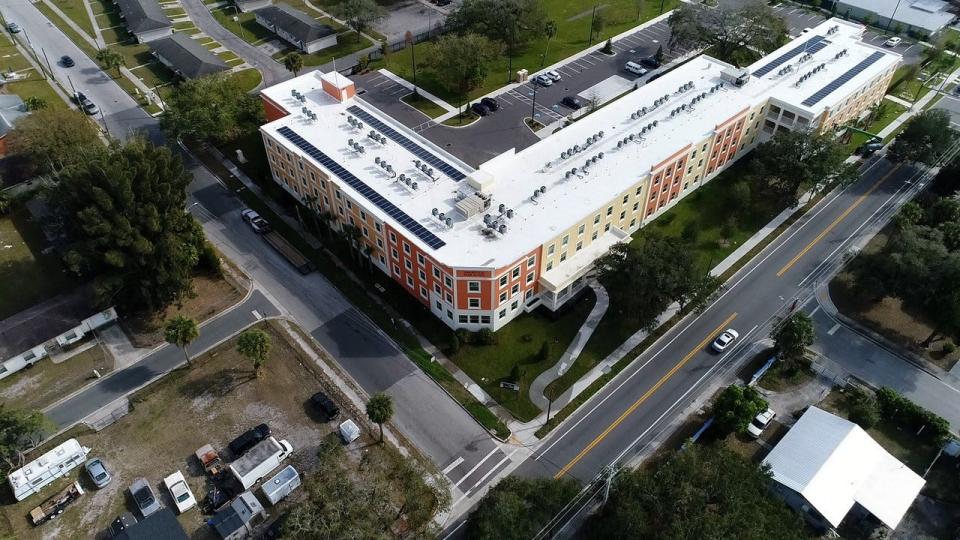As rents go up and evictions increase, Sarasota's seniors struggle to find places to live
Phil Kay looked at the letter, not sure he was reading it right.
His apartment had a new owner who was not only raising the rent, they weren't renewing his lease.
The 67-year-old retired Sarasota resident – a long-time manager in area delis and steak restaurants – had lived in his one-bedroom apartment for 13 years.
It was the perfect home – a few short miles to downtown and his doctors. Small but well-appointed, with photos and paintings on the walls. A place where he threw barbecues with neighbors and dinner parties with nearby friends. A place where he planned to live out the rest of his life.
Affordable Housing: United Way Suncoast's new data shows half of all local renters now rent-burdened
Job candidate sticker shock: The affordable housing crisis hits Sarasota-Manatee's biggest employers
But that day in October, the letter he held in his hand said he had to go.
“You really want to know?” he said about his reaction. “I cried.”
Even though Kay couldn’t afford the nearly $500 rent hike – going from $1,025 a month to $1,500 – he asked if he could stay anyway, if he came up with a way to pay. He’d always been current on his rent. But the answer was no.

So began Kay’s scramble, well into his retirement, for a new place to live, sitting with the phone book, making calls every day for three and a half months, fear turning to desperation, as he found nothing he could afford on his Social Security income. One-bedroom apartments ran between $1,500 and $2,000 a month. He had no family in the state to help him, and his bad back prevented him from returning to work.
“This is the worst thing that has happened to me since my dad passed away 20 years ago,” Kay said.
Sarasota has kept the top spot on U.S. News' Best Places to Retire list for the past two years thanks to warm weather, many health care options and no state income tax.
But among the thousands of area residents caught in the current affordable housing crisis, the problem is especially dire for older people.
For many retired residents on fixed incomes – often with fewer work options and more disabilities than their younger counterparts – even a slight rise in rent can spell disaster, let alone the 50% increase recorded the past year in Sarasota County.
Area social workers describe a harrowing reality, with subsidized affordable housing complexes full and private landlords selling or dramatically increasing the rent. Desperate seniors are looking for a place to go.
“My phone is ringing off the hook, and my heart is breaking,” said Susan Schoengold, the coordinator of Jewish Financial Assistance and Jewish Care Management at JFCS of the Suncoast and the caseworker who helped Kay with his search.
“This is the topic of the day."
Schoengold said similar cases are now taking up much of her time, even though finding housing is not usually part of her job.

Many of her older clients are living in their cars, knocking on neighbors’ doors, scouring mobile home or RV parks for rentals and not finding any places they can afford. One is renting a room in his ex-wife’s house.
“I think these people had a plan,” she said about her clients, retirees who once worked and saved or lived within a budget, now shocked to find themselves in this situation. “Who knew someone was going to double your rent?”
More: Photo exhibit depicts the people facing Sarasota-Manatee's affordable housing crisis
Seidman Says: It's time for Sarasota County to take housing seriously
Even those who were receiving up to $1,500 or $2,000 a month in Social Security are stuck, she said. For the few apartments in their price range, landlords are asking for proof of income that is three times the cost of rent – dashing their hopes.
“The senior citizens are being completely priced out,” Schoengold said.
For Kay, he was about to take the only thing he could find – a room in a house in Nokomis, far from the community he’d built through the years. That’s when a Sarasota friend stepped in, offering him a room in his Sarasota rental house, along with one other tenant, a younger man in his 40s.

Kay feels fortunate and happy in his new place – he’s still close to his friends and his doctors. He has his own room and bathroom, with plenty of space to barbecue on the pool patio. The rent is even lower -- $850 a month, though he’s had to rent a storage unit for $120.
But the entire ordeal has left him shaken.
“My situation is better now,” he said, “but it was probably the most devastating move I ever made.”
A crisis within a crisis
While all age groups are suffering amid soaring rents and a shortage in affordable housing, seniors represent a crisis within a crisis, caseworkers report. With fixed incomes or failing health, they often have fewer options to bolster household earnings than younger counterparts.
Some in their 70s and 80s are going back to work anyway, caseworkers say, taking jobs at grocery stores or pharmacy chains, sometimes causing or worsening health issues such as bad backs or worn joints.
“It is absolutely crazy what is happening right now,” said Ola Medrzycki, Friendship at Home manager for the Senior Friendship Centers, where she said calls for help with housing have doubled the last six months. “I will be honest, we don’t know how to help.”
Caseworkers can tap programs to assist with rent or aid with a search, but for many retired clients, there’s just nowhere to go that they can afford long-term, she said.
“When you are on a fixed income, even $50 (in higher rent) is going to cause a big hole in your budget,” Medrzycki said. “Every dollar counts, and we’re talking about $400 (increases)."
At this stage of their lives, staying at a homeless shelter or crashing with friends is a traumatic step for many, she said.
Some who retired here for nice weather and quality of life – including a client family from Chicago – are now returning north because they can’t afford to stay.
“It’s beautiful here, but it’s probably not beautiful for everyone,” she added. “What a mess that has happened in this area. I don’t know what happened here.”
That was Anthony Ramirez’s situation. When he and his wife moved to Sarasota from New York in the late 1990s, they counted on lots of Florida sunshine, good doctors for her health issues and a nice area to call home.
What they didn’t expect as Ramirez neared retirement in January – after 23 years as a technician with the City of Venice Utilities Department – was that someday they might be turned out in the street.
“We thought we were going to end up getting thrown out,” Ramirez said about what happened this fall. New landlords bought the South Venice duplex where they lived and were raising the rent from $825 to $1,200.
Ramirez worried for his wife, who is on oxygen, with heart and lung ailments. Her stress levels climbed through the roof as they searched for an alternative to their two-bedroom unit.
Already behind from cut job hours during the pandemic, Ramirez worked overtime to bolster his final paychecks until officially retiring in January, also when the rent increase went into effect.
But once the couple took care of February’s bills, they were out of money.
That’s when Ramirez turned to Medrzycki at Senior Friendship Centers, which helped cover March’s rent from Season of Sharing funds, carrying them over until his pension kicked in this month.
The assistance eased their stress, Ramirez said. But moving forward, things will be tight – with half of their retirement income needed to cover rent.
“Hopefully we’ll manage,” he said.
Seniors desperate for help, private spots drying up
Many older residents, though, are not able to manage, according to caseworkers.
Most government-subsidized senior housing complexes in the area have no availability. But driving the crisis is that low-cost units on the private market are now disappearing – with landlords choosing to sell their properties or spiking the rent.
“My private landlords used to be my go-to,” said Michelle Scott, housing specialist and case manager at the nonprofit Turning Points in Manatee County. “Now I can’t even go to them.”
The biggest challenge, she said, is that the majority of clients have Social Security incomes of $794 a month.
“And I have no earthly clue where I’m going to put them on an income of $794,” she added.
Some of her clients are former social workers themselves. Others are retired law enforcement or spent years working in the local service sector.
Many come into her office in shock, having worked all their lives and retired here unaware of how expensive it would end up being. After housing costs eat through their retirement savings, they are lost, with nowhere to go.
“They just need to find somewhere to cry, some of them,” Scott said. “They just want to sit and cry because that’s about all they can do.”
Some waiting lists for homes have been closed for years
The shortage in affordable housing in general, and for seniors in particular, predated current rent escalations. The community need to “ensure well-maintained safe affordable housing options for adults of varying income levels” was identified as the “greatest gap” in housing by 1,200 Sarasota County residents ages 50-98 who were surveyed in 2015, according to the Age-Friendly Sarasota County Action Plan, released in May 2017.
That need prompted the Sarasota Housing Authority to designate its latest project to senior housing. Sarasota’s 84-unit Amaryllis Park Place opened in February and was already full by mid-March – with a waiting list of about 50 people, said property manager Erika Manchester. Some of its units are subsidized while others are characterized as non-subsidized but affordable.

More housing needed: Sarasota officials celebrate opening of affordable senior housing development, more needed
The waiting lists at two other affordable housing complexes for seniors in Sarasota County – McCown Tower and The Annex – are closed because it will be years before many already on them will be able to access to an apartment.
At Venetian Walk in Venice – with 61 affordable apartments for seniors 62 and older – the waiting list for income-restricted units has been closed since 2018, and those for low-income units since 2014.
The same is true for Venice's Villa San Marcos, an 80-unit affordable apartment complex for seniors 62 and up, said manager Jean Moore. The waiting list has been closed for about a year.
"I don't know how many calls a day, 10 to 15?" Moore said, describing many of her callers as middle-class. "They are crying on the phone to me, and I just don't know what to say to them."
The Sarasota Housing Authority's offices have also been inundated with calls and emails, some from adult children living out of state, struggling to help their parents, said William Russell, president and CEO of the authority, which owns and operates low-income housing mostly through federal and state funds as well as local contributions.
“We’re not really geared for those types of emergency housing situations,” he said.
One of the residents who secured a place in Amaryllis Park Place was Daniel Goldstein, 78, of Bradenton.
After his landlord decided to sell the house he rented, Goldstein, a retired telecommunications business owner, undertook a massive search for another place to live.
Schoengold at JFCS helped, snagging him one of the last apartments left at Amaryllis. But it was a two-bedroom.
Goldstein resumed his search – this time for a roommate, to split the rent.
“It’s the only option that I have,” he said.
He put an ad on Craigslist and waded through many candidates before finding someone he thought would be a respectful and compatible roommate.
“We talked exhaustively,” he said about the process of vetting each other ahead of a mid-March move-in date. “He was searching, too.”
This story comes from a partnership between the Sarasota Herald-Tribune and the Community Foundation of Sarasota County. Saundra Amrhein covers the Season of Sharing campaign, along with issues surrounding housing, utilities, child care and transportation in the area. She can be reached at samrhein@gannett.com.
This article originally appeared on Sarasota Herald-Tribune: Affordable housing is hard to find, especially for Sarasota seniors

